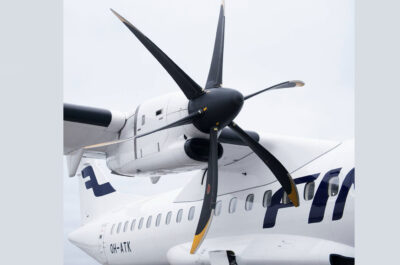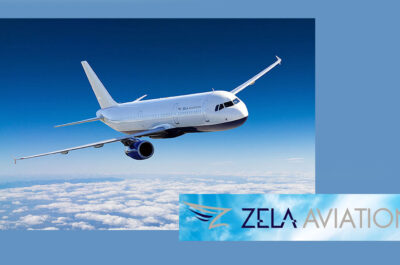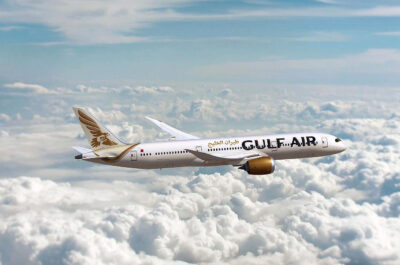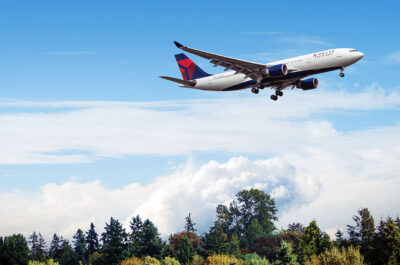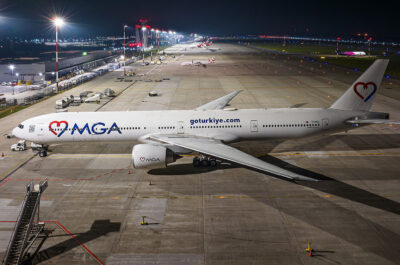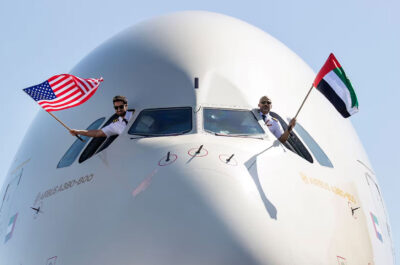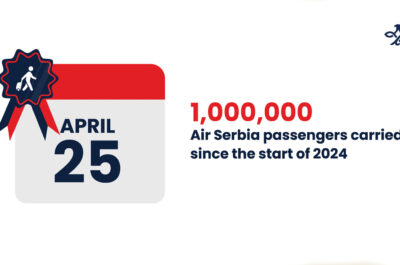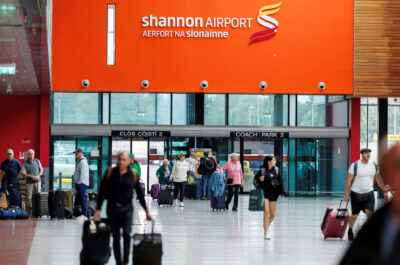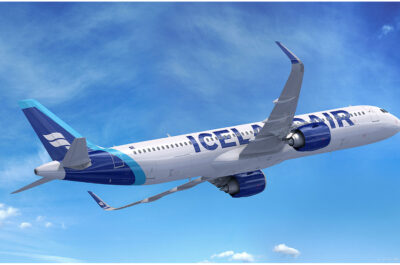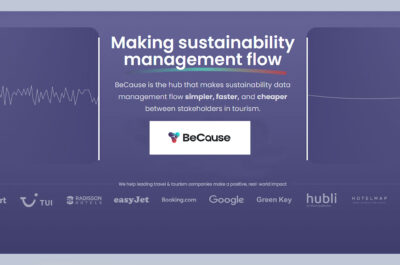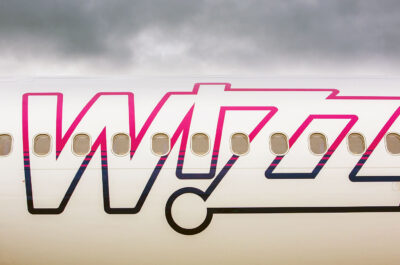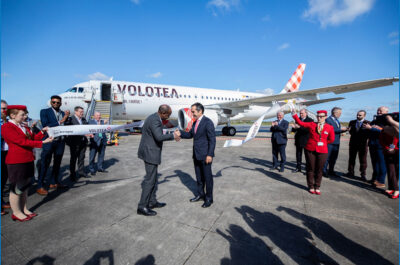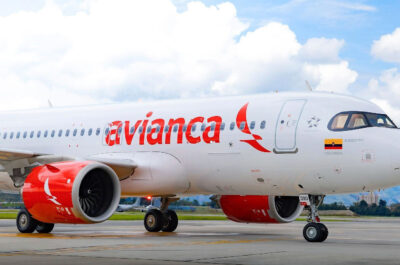Consolidation in domestic markets and joint ventures on some long-haul routes have been key factors in generating efficiency gains to support financial performance. This is illustrated by a rise in the load factor from 76.1% in 2006 to an expected 79.8% in 2013.
GENEVA – The International Air Transport Association (IATA) announced a modest improvement in its outlook for the 2013 financial performance of the global airline industry primarily based on stronger revenues. IATA now expects airlines to produce a combined net post-tax profit margin of 1.6% (up from the previously forecast 1.3%) with a net post-tax profit of $10.6 billion (up from the previously projected $8.4 billion).
“Industry profits are taking a small step in the right direction. Against a backdrop of improved optimism for global economic prospects passenger demand has been strong and cargo markets are starting to grow again. The economic optimism is also pushing fuel prices higher. We are seeing a $12 billion improvement in revenue, and a $9-10 billion increase in costs—most of which is related to fuel,” said Tony Tyler, IATA’s Director General and CEO.
Confidence in the airline industry is rising around several factors:
- GDP growth forecasts for 2013 have been upgraded to 2.4%, a significant improvement from the 2.1% in 2012.
- It appears that the bottom of the global industrial production cycle was reached in the third quarter of 2012 after which there has been six months of increasing output and improvements to business confidence.
- There is a structural improvement in the airline industry’s financial performance as recognized by a 7% increase in share prices since the beginning of the year, despite a 5% increase in fuel costs.
Risks and Volatility
IATA noted that considerable risks remain which could derail recovery. The outlook is based on evidence of growing business confidence. But the controversy over the draconian bailout proposal for Cypriot financial institutions is a clear indicator that the Eurozone crisis is not over and could take a turn for the worse.
“European Central Bank commitments with respect to the Eurozone crisis and the slow economic recovery in the US should be pointing us towards a durable, if weak, upswing. But we have had two false starts already. Improving conditions in early 2011 and 2012 disintegrated as the Eurozone crisis intensified. And it could happen again. The impact of the unfolding situation in Cyprus is a risk factor that cannot be ignored,” said Tyler.
Forecast Highlights
Stronger Revenue: Stronger revenues ($671 billion, up $12 billion from the December outlook) are the main driver of the slightly improved financial performance. Cargo demand is expected to grow by 2.7% (reversing the declining trend of the last two years) and cargo yields are expected to be flat (an improvement on the 1.5% decline previously projected). Passenger demand is forecast to grow by 5.4% (up from the 4.5% previously expected) and yields are expected to grow by 0.4% (rather than the 0.2% decline previously projected).
Costs: Fuel costs are increasing. Jet fuel is now expected to average $130/barrel for the year (up from $124.3/barrel projected in December). And the fuel bill will grow to $216 billion, a $6 billion increase over December’s expectations. Overall, fuel will account for 33% of airline costs, unchanged from 2012.
Cash Flow: Airline cash flows are showing better than expected performance given high costs and weak growth. This however varies by region and airline size. Large Asian carriers have seen the most improvement. The trend in the US is flat but comparable with pre-recession levels, while European airlines are struggling with the lingering recession.
Efficiency: A comparison of 2013 conditions and expected profitability to those of 2006 reveals significant gains in efficiency. The industry aggregate operating margin in both years was similar (3.2% in 2006 and 3.3% is expected for 2013) but conditions in 2013 are much more difficult:
- In 2006 GDP growth was 4.0%, well above the 2.4% expected this year.
- In 2006 the cost of a barrel of Brent crude was $65.1, well below the $109.5 expected this year.
Consolidation in domestic markets and joint ventures on some long-haul routes have been key factors in generating efficiency gains to support financial performance. This is illustrated by a rise in the load factor from 76.1% in 2006 to an expected 79.8% in 2013.
Regional Outlook
Asian-Pacific airlines are expected to deliver the largest absolute contribution to industry performance with a $4.2 billion net profit expected for 2013 (up from $3.2 billion previously projected and from the $3.9 billion reported for 2012). Asian carriers comprise about 40% of the air cargo market and will be the biggest beneficiaries of the expected upturn in cargo demand. Carriers in the region are expected to see average demand growth of 4.9%, slightly outpaced by a 5.0% capacity expansion.
North American airlines are expected to report a $3.6 billion profit. This is slightly ahead of the $3.4 billion previously projected and the $2.3 billion profit reported in 2012. The region is a mature market (particularly for domestic operations). Tight management of capacity in response to the high fuel cost environment will see a 1.3% expansion in demand leading a 1.1% expansion in capacity.
European carriers are expected to report an $800 million profit. This is an improvement on the previously projected breakeven performance and the $300 million profit in 2012, but at only 0.4% of revenues that’s barely different from breakeven. And it is the market that will be most affected by volatility caused by the Eurozone crisis. The European domestic market continues to be weak, reflecting recessionary conditions across the continent. However, airlines are expected to show stronger performance on long-haul routes to emerging markets. Overall demand for European carriers is expected to grow by 2.6% which is in line with a capacity expansion of 2.5%.
Middle Eastern airlines are expected to post a profit of $1.4 billion. This is up slightly from the $1.1 billion previously forecast and stronger than the $900 million profit recorded in 2012. The growing role of the region’s airlines in providing connectivity to developing markets is reflected in strong traffic growth. The region’s airlines are expected to add 12.8% in capacity in 2013 and this will be outpaced by demand growth of 13.7%. The region’s carriers rank third in terms of operating profitability with an Earnings Before Interest and Taxes (EBIT) margin of 3.4%, after Asia-Pacific (5.3%) and North America (4.1%).
Latin American airlines will post a $600 million profit. It is the only region to see a decline ($100 million) compared to the December forecast. This will, however, represent a doubling of profit compared to 2012. The continent’s growth has slowed in response to earlier losses in volatile domestic markets. Nonetheless, the region will see the second highest growth in demand (8.1%) and that will be 1.4 percentage points ahead of expected capacity expansion.
African airlines are expected to post a $100 million profit in 2013. That is ahead of the break even performance previously projected and the $100 million loss of 2012. African carriers are expected to see a 6.5% increase in demand during 2013 which they will meet with a 6.4% expansion in capacity. The continent continues to be a focal point for growth by those carriers located in the region and those providing services into the region. Competition between the two remains fierce.
Moving Forward
“The improvements in industry profitability are encouraging. But they must be kept in perspective. We are projecting that airlines will make a net profit of $10.6 billion on $671 billion in industry revenues. By comparison last year Nestle, a single company, made over $11.5 billion in profit on revenues of about $100 billion. Chronic anemic profitability is characteristic across most of the aviation value chain when compared to other sectors. It will require more than improving economic conditions to fix. Neither the challenges nor the benefits of doing so should be underestimated,” said Tyler.
Aviation is a catalyst for economic growth and development that supports some 57 million jobs and $2.2 trillion in economic activity.
“The only way out of the current economic difficulties that we see around the world is growth. Airlines play an important role, providing connectivity that stimulates business and delivers products to global markets. But we can only do this if the industry is generating sustainable returns,” said Tyler.
“The improved outlook despite the difficult operating environment demonstrates the efficiencies and improvements achieved as the industry has restructured itself over the last decade. But too often governments throw us curve balls. In the last weeks we had some unpleasant reminders. Europe announced proposals for passenger rights legislation that will add costs to flying, but with little or no long-term benefit to consumers. The US budget sequestration will see cuts to air traffic management, security and border control that may cost more economically than the benefit of the cost savings achieved. And the UK’s Air Passenger Duty -the highest aviation tax in the world- will increase again on 1 April. Airlines don’t want special treatment, but they do need a joined-up policy framework that enables them to meet the growing needs for connectivity sustainably. With a 1.6% net profit margin, there is very little buffer between profit and loss,” said Tyler.
Theodore is the Co-Founder and Managing Editor of TravelDailyNews Media Network; his responsibilities include business development and planning for TravelDailyNews long-term opportunities.

